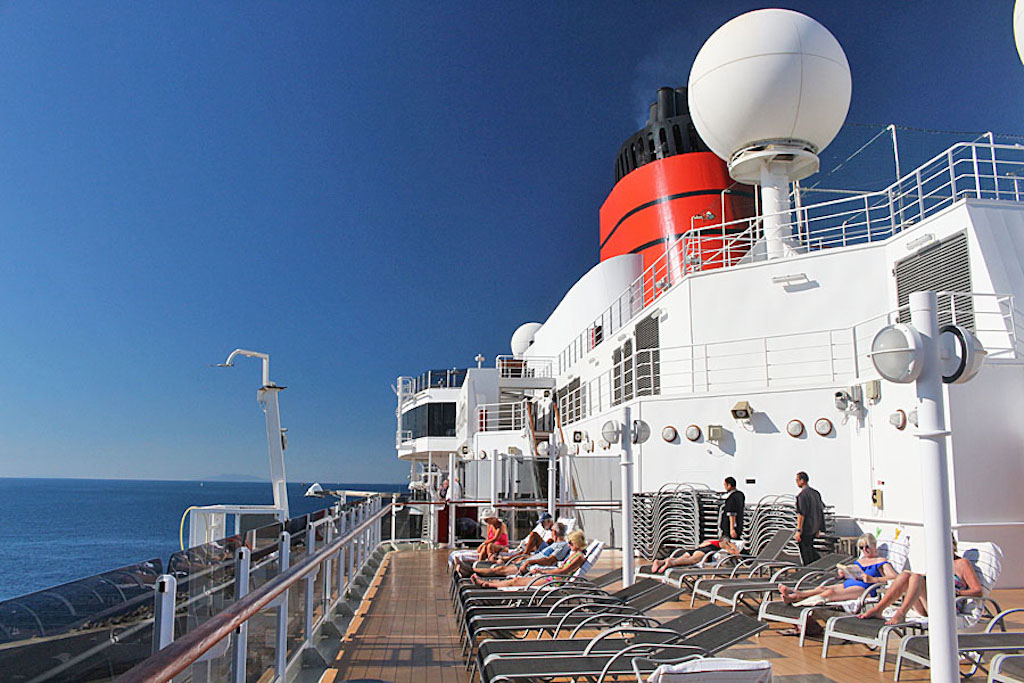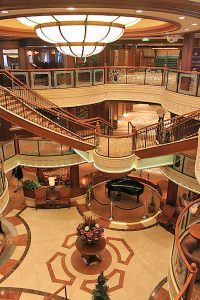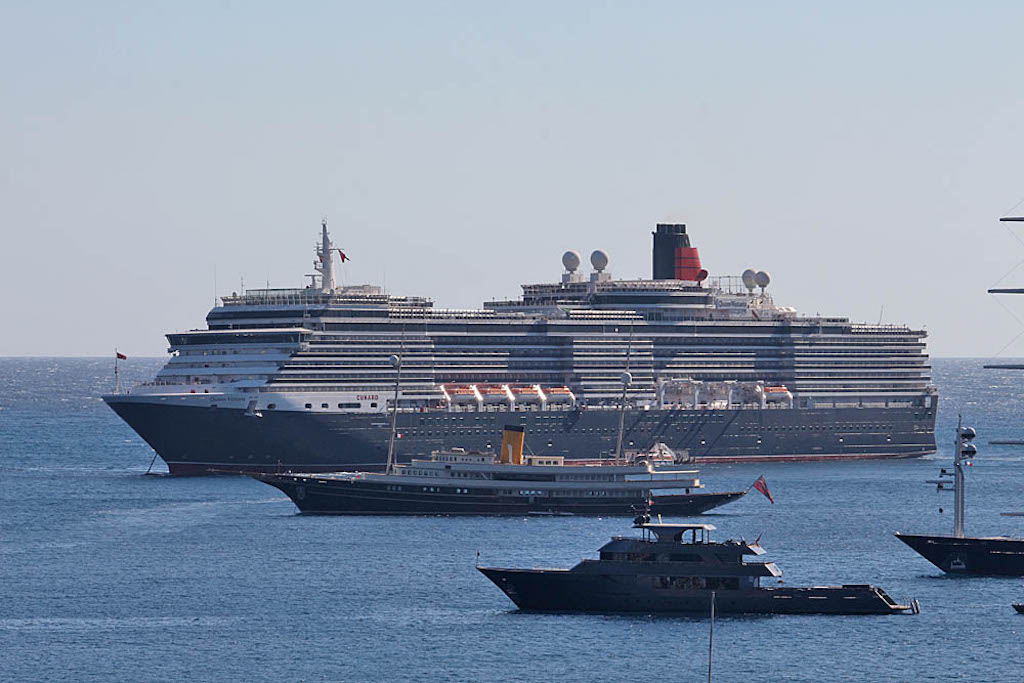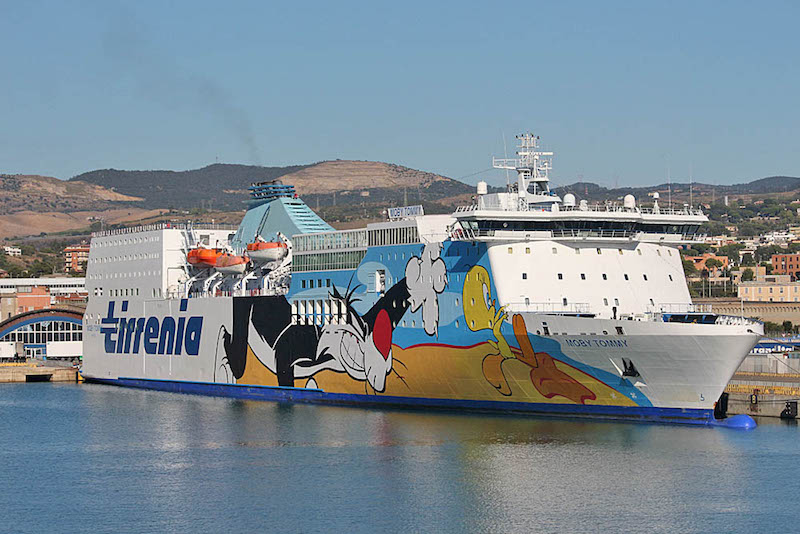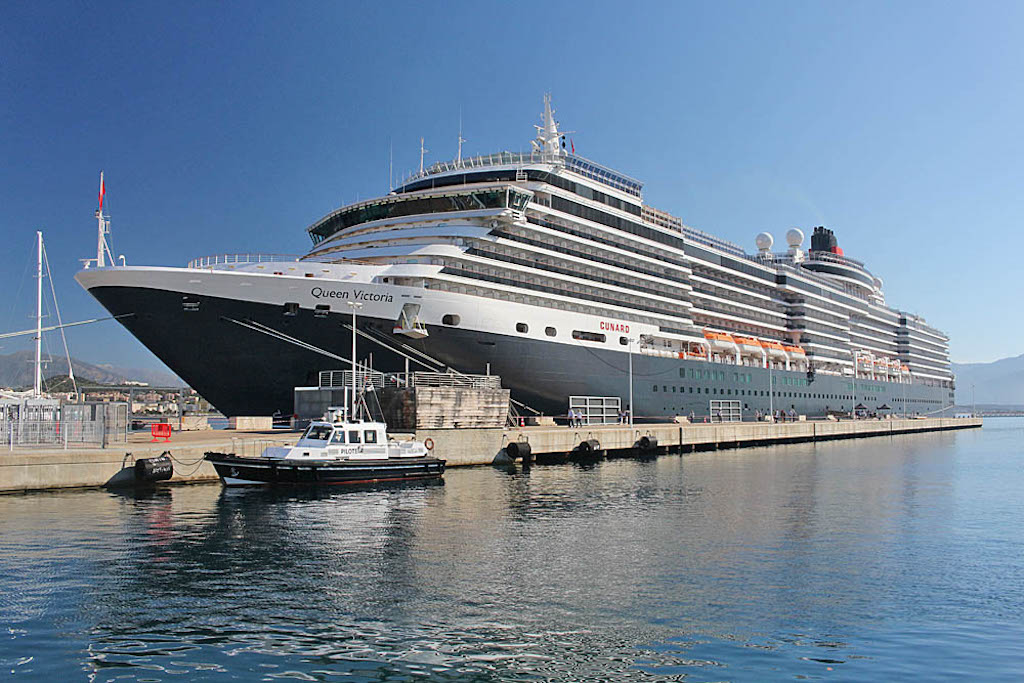Colin J. Smith, recently returned from a cruise in the Mediterranean, says the 21st century Cunard experience upholds the high standards of the past.
A decade ago, on 5 October 2008, the Cunard liner Queen Elizabeth 2 made her final voyage home to the Clyde. Like many other CRSC members, I will not forget that historic day, but I would never have guessed that, exactly 10 years later, I would be standing on the decks of another fine Cunard vessel in Livorno, Italy.
I had made a point of sailing aboard QE2 in her last few months of service. Having watched her being built at Clydebank and having toured the ship whilst she was fitting out (three times no less — twice on the same afternoon ticket, because my grandfather ‘knew the man’ on John Brown’s gate in Cart Street), I was determined to sail aboard the ship that we, the Bankies, built — albeit with some assistance, it must be said.
So in July 2008 we sailed aboard QE2 to Rotterdam and Zeebrugge. Not only was I hooked on cruising, but the outstanding on-board service and international clientele meant I was hooked on Cunard in particular. My enthusiasm has lasted well beyond the sad departure of QE2 for her new home in Dubai and the ending of a Clyde connection that spanned 168 years.
Fast forward 10 years and here I was in the shiny new Amerigo Vespucci cruise terminal at the Italian port of Civitavecchia, stepping aboard Queen Victoria — at 90,000 gross tons, a mere 20,000 larger than QE2. One of three current Cunard ships, Queen Victoria is, like her fleetmate Queen Elizabeth, a modern Vista class cruise ship built to a higher specification than other vessels of the class, to allow them to undertake transatlantic voyages. The third of the trio, Queen Mary 2, has inherited the mantle of QE2 as a true transatlantic liner.
Professor Bruce Peter of Glasgow School of Art, who is a well-known shipping enthusiast, has observed that “Cunard today is a retro ocean liner theme park evoking the golden age of ocean travel.” Maybe not quite a “theme park” but we know what Bruce means. Would the Cunard experience be as amazing on Queen Victoria as it had been aboard QE2?
The outstanding levels of Cunard Line service still start when you step out of the taxi and porters whisk your suitcases away, to be transported directly to your stateroom (never ‘cabin’). Next, smiling shore staff greet you like an old friend with a “welcome back sir”, whilst our stateroom steward (Cristina) extends a warm personal welcome to all guests under her care for the next seven days.
Even with her 2,081 passengers and 900 crew, Queen Victoria never feels busy, and there are acres of deck space and lounges, bars, restaurants and a well stocked library in which to while away time in peace and quiet. Fellow passengers were mainly from the British Isles (many Scots and Irish) and of European origin. Old habits die hard: I did lots of walking — three times round the promenade was one mile.
Having departed from Civitavecchia we enjoyed a relaxing day at sea in splendid weather before an early morning arrival at Barcelona. At his welcome reception the previous evening, Dublin-born Captain Tomàs Connery, a veteran of QE2 and commander of a multinational crew, had hinted there might be “some wind” on the next leg of the journey to Ajaccio on the island of Corsica. The forecast showed a possible 40 to 50 knot wind (Le Mistral) — quite a test for Queen Victoria. How would she feel in those conditions?
The ship left Barcelona in the evening and, as we rounded the end of the breakwater, a slight roll was experienced. Although this ceased as we headed into the darkness, I anticipated some movement later in the night. Around 4.30am I awoke to a gentle movement accompanied by some of those stressing sounds that ships make when they are in heavy seas. I thought little of it until I checked the weather on the ship’s navigational display. You can imagine my amazement when the wind speed indicator showed 90 knots! Yet Queen Victoria was not showing any sign of disturbance.
By morning the wind speed had moderated to a mere 50 knots. Seas were white-capped and the external decks remained closed as we cruised serenely through the Gulf of Lion, one of the windiest parts of the Mediterranean. Save for her 17-knot forward motion there was little movement, and most passengers appeared happy at breakfast, with no evidence of any weather-induced misery. What a fine ship she is!

From stem to stern there is plenty of open deck space – CMAL take note! The possibilities include this unusual view over the aft railing of Queen Victoria
All three ‘Queens’ offer meticulously high standards of maintenance and guest service: Queen Victoria was in immaculate condition, and she is as spacious as QE2 – it is easy to lose oneself in the library or one of her many grand public spaces.
The elegance of those vast restaurants and spaces on the original Clydebank ‘Queens’ has inspired the design of this most elegant of cruise ships. From the double-height Britannia Restaurant, its decor inspired by the dining car of the Golden Arrow train that linked London to Paris, to the wood panelled Churchill Lounge, the classy forward-facing Commodore Club, the Verandah Restaurant, based on the Verandah Grill of the original Queen Elizabeth, the Chart Room Bar, based on that of QE2, and the open and relaxing Winter Garden, also redolent of Queen Elizabeth, this is a ship that appeals to anyone with an appreciation of the heritage of Cunard.
Clyde links remain strong: around the ship can be seen images of Cunard history and fine paintings of past Cunard ships — many by the well-known Scottish marine artist Gordon Bauwens, featuring Cunarders with a Clyde steamer thrown in for good measure. These include the first Glen Sannox, Caledonia, Jupiter, Queen Mary II, the current Waverley and assorted puffers. Gordon’s magnum opus — the original Queen Mary leaving John Brown’s shipyard — can be found on stairway B between decks 3 and 4.
The Mediterranean is a paradise for ferry enthusiasts, with the vessels of Moby Line, Grimaldi, Tirrenia, Balearia and Corsica Sardinia Ferries regular sights on our calls at Barcelona, Ajaccio and Livorno, whilst we shared the harbours with ships of other cruise companies including Princess, Costa, Pulmantur, Seabourn, Marella and Royal Caribbean.
At Villefranche we anchored close to the elegant yacht Nero, a vessel that, with her stately appearance, would make a wonderful sight pushing her way through Scottish waters on a sunny summer day.
In my experience, a cruise on Queen Victoria evokes the golden age of ocean travel and continues to offer everything that made Cunard the world’s greatest liner operator. She is scheduled to make two Greenock calls in 2019 — on 6 June and 8 August. The visit of any Cunarder is a high point in the cruise calendar, and you can bet that crowds will gather on the Greenock Esplanade to welcome Queen Victoria as she follows in the wake of QE2. I shall most probably be there!
Copyright for all photographs accompanying this article belongs to Colin J. Smith
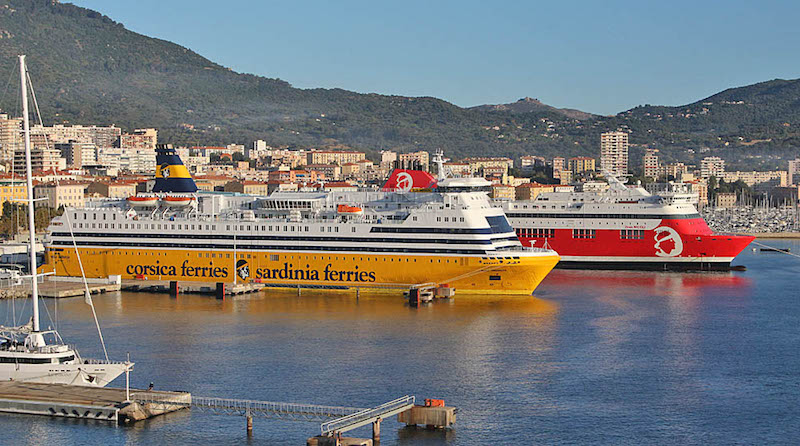
‘The Mediterranean is a paradise for ferry enthusiasts’: Mega Smerelda and Jean Nicoli at Ajaccio, Corsica
Catch up with all CRSC’s news and reports by clicking here.
Published on 28 November 2018












